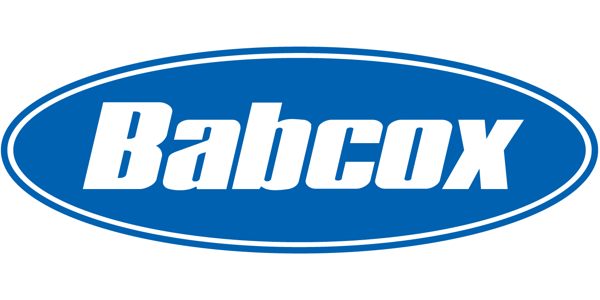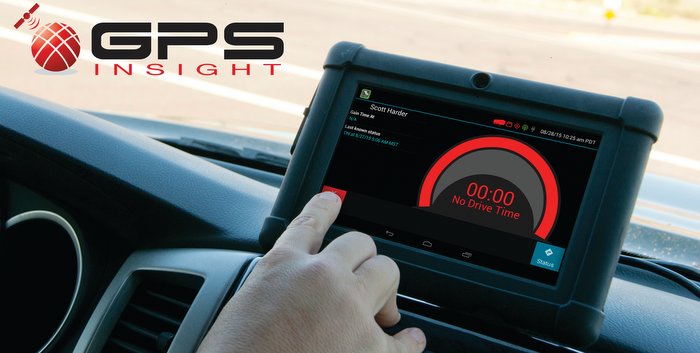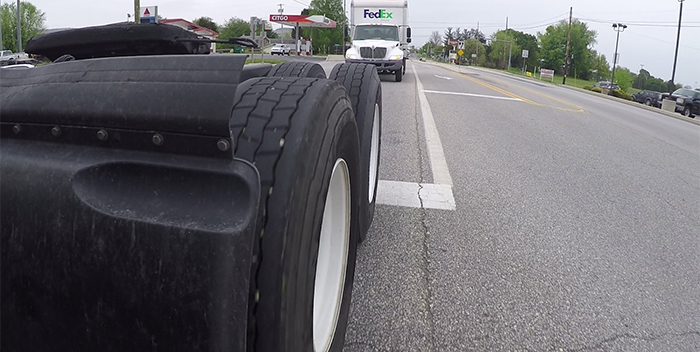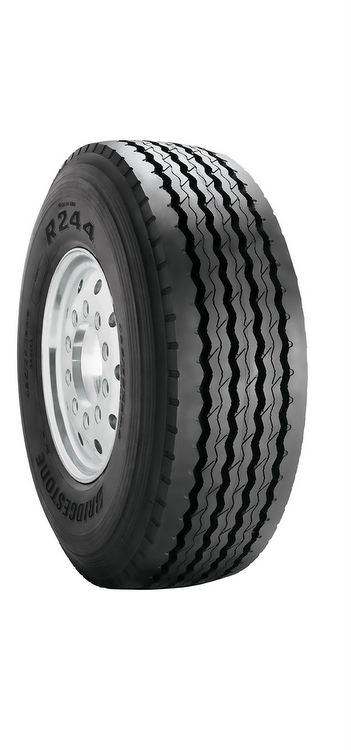Businesses depend on keeping equipment in good repair and producing revenue at the least possible cost. Tracking maintenance with software saves time and money by improving the ability to plan and manage all maintenance operations efficiently. The software accurately increases visibility to costs and operations performance.
According to Scott Vanselous, senior vice president and general manager asset maintenance organization for TMW Systems, “Software should capture complete information on work performed or transactions completed for one, some and all vehicles. The information becomes available for decision support and financial analysis. This particular design provides information in real-time to give management the power to analyze, evaluate, negotiate and manage fleet and equipment assets and expenses.”
To save money, systems need to integrate management of all maintenance areas including preventive maintenance (PM) schedules, parts inventory, fuel and tire usage, technician hours, billing and maximum warranty recovery. To be successful in tracking maintenance costs with software, companies need to capture and retrieve information including: technician productivity, lifetime-to-date cost per mile, individual unit history, preventive maintenance due and reasons for repairs.
Profiling vehicles
One carrier’s vice president of operations puts it this way, “Historically, we could pull two sister tractors in for repair, go back and look at clutch jobs and warranty information and discover that on one truck we spent thousands more than on the other. Now, the software has the functionality to show just how much we are spending on each vehicle at any time.” He advises choosing software that allows technicians to clock in and out of the system with the ability to enter information by vehicle number, thereby creating a total history instantly available for future reference.
Features and benefits
Seek a software solution that is proven and can handle every aspect of managing and maintaining equipment at maximum efficiency. Look for a user-friendly design that makes it easy to plan, execute, track and bill.
Look for outstanding shop and equipment management tools, plus solid management reporting mechanisms like alerts, notification and key performance indicators. Find an end-to-end solution with a complete purchase ordering system for parts/purchasing management. The use of bar coding improves data integrity, cuts errors and facilitates maintenance, part and labor charging. Look for warranty and fuel management capabilities.
Choose a system that helps monitor and streamline workflow and provides reports to enable process improvements. In short, look for a system that eliminates waste and redundancies to save money.
Save, don’t waste money
Charles Arsenault, CEO of Arsenault Associates, says, “Many fleets are still maintained using paper and blackboard systems. They may believe they’re saving money when, in fact, they’re probably wasting it and working harder than they have to. It’s very hard to know and control costs with a paper system.”
 On the other hand, maintenance software properly deployed and used automatically shows costs and cost per mile. Maintenance software is designed to help fleet managers and shops become organized and help to keep them that way.
On the other hand, maintenance software properly deployed and used automatically shows costs and cost per mile. Maintenance software is designed to help fleet managers and shops become organized and help to keep them that way.
The benefits realized are:
• Breakdowns and emergency repairs decline; fleet utilization and reliability increase. Proactive preventive maintenance will replace most emergency repairs, and scheduled work can be 80% of all work in fleet shops. High-cost vehicles and problem drivers will be identified.
• Parts inventory costs decline. Software reduces inventory by identifying unused, obsolete parts; by preventing duplicate orders and by eliminating over-stocking. At the same time, it lowers downtime by ensuring that frequently replaced parts are on hand. Fleets will save on fuel, oil, and other fluids tracked as inventory. Warranties will be tracked and real dollars recaptured.
• Fuel and tire costs go down. Fleets can automatically develop operational benchmarks for costs. They can identify, analyze and remediate (or sell) fuel-inefficient units. They can track tire costs and measure cost-per-mile, then buy tires based on actual performance in the fleet.
• Labor productivity rises. Shops will see actual hours worked versus hours paid and the comparative productivity of each technician. Accountability increases while technician time spent on paperwork declines by as much as eight hours per week––time free for productive work.
• Administrative efficiency increases. Fleets can make vehicle buying decisions based on hard data and real performance comparisons. They will see cost trends to make projections and prepare valid budgets.
• Regulatory compliance improves. Fleets will proactively monitor driver license renewals, driver physicals, and various state permits. Fines due to lapsed documents will disappear. Maintenance records will always be accurate, up-to-date and compliant with DOT requirements.
The 10% Solution
Maintenance software enables efficiencies that are virtually impossible to achieve otherwise. Arsenault says, “For example, there’s something we call the 10% Solution. In this initiative, a fleet manager uses software to automatically identify the top 10% lowest performing, highest cost units. Knowing these vehicles and why they are the fleet’s problem children enables a fleet manager to make business decisions that ultimately reduce overall costs by as much as 20%, downtime by 40%, and his aggravation by 80%. And it’s interesting to note that the oldest units are not always the problem units, nor the most costly.”
The 10% Solution allows fleet managers to deal with specific causes. For the longer term, it identifies the type of equipment and equipment specifications that work best within fleet applications, from tires and batteries to powertrains, models and nameplates.
Attempting this kind of analysis with paper records can be overwhelming and simply impractical. Maintenance software makes it possible and highly beneficial.
Shopping for software
Arsenault goes on to say that fleet managers should identify their needs and what ROI they and the company can expect by implementing maintenance software. It should be noted that fleets that go from a manual paper system to automated computerized systems typically achieve ROI under six months if the system is properly deployed and used.
Fleet managers should consider the size and type of fleet and the fleet’s application. Further, they should identify the areas of the operation where automation will produce the best, long-term benefits.
For example, a long-haul fleet that has a lot of its maintenance performed on-the-road needs software with features that provide good control of outside service vendors and interfaces with their fuel card system.
Conversely, a locally operated fleet with a single in-house shop needs software that has a good parts inventory system with purchase order control, and one that interfaces with its fuel island system.
While there are a variety of functions and features available in various software packages from different software vendors, there are certain fundamental items that are most often requested. The following is a list of commonly requested functions and features from over 40,000 fleet inquiries during Arsenault’s 30 years of providing fleet maintenance management software:
• Asset management with detailed specifications
• Automated preventive maintenance scheduling
• Repair order generation, tracking, and histories
• Automated costing and cost per mile generation
• Equipment utilization monitoring
• Parts inventory with automated reorder
• Labor productivity monitoring
• Vendor management
• Fuel management
• Tire management
• Warranty management
• Automated administrative features, such as license renewals and DOT compliance
Software and its features are obviously important. But the company that stands behind that software is also important. Be sure the company provides implementation services, training and program support. Here are a few factors to consider when choosing a software supplier:
• The software provider’s financial condition. (D&B standing)
• Number of fleet-experienced people on staff
• Technical support response time
• Number of installed programs
• Hours of support service
• Program updates, frequency and cost.
• Implementation services and training availability
• User group activities
Maintenance software makes good business sense, but Arsenault says fleets need to select both the software and the vendor with care. The right choices will go a long way toward determining how successful the software deployment will be and how well it will serve fleet needs.
Track trends
Ed Cooper, CEO, Squarerigger Inc. says, “Tracking maintenance trends is a complex process that requires collection and retention of detailed historical data along with carefully designed analytical processes. Good analytical reports disclose the cost-per-month trend over an extended period and highlight equipment that is taking increasingly more maintenance in terms of replacement parts and labor. This information leads to the next logical step of comparing the cost of maintaining aging equipment with newer equipment that is covered by manufacturers’ warranties that help defray the up-front cost of replacement.
Another important aspect of tracking trends of aging equipment is the ability to easily capture fuel usage and analyze fuel costs per mile over time and compare it to newer, more fuel-efficient equipment. The combination of maintenance cost and fuel usage trends presents an indisputable picture of the merits of this exercise. The results are almost always startling in terms of identifying how fleet dollars can best be spent.
The key to trend analysis is fleet software that permits simple data-entry processes to capture meaningful historical data with little or no investment of technician time. For example, customizable master service reference tables should contain PM miles or hours intervals that conform to the meters on each piece of equipment, plus be able to define maintenance intervals in days. These definitions should be able automatically to produce a list of queued PM services as they are due. Other automated features such as previously queued repair actions in work-pending lists as well as cascaded PM definitions (where major PM actions automatically cover action subsets) can also contribute to technician productivity.
Engine monitoring software
Tom Dorazio, product manager of vehicle management for PeopleNet, says “Engine monitoring software such as PerformX enables fleets to proactively identify vehicle problems that can be remedied through preventive maintenance before they lead to costly repairs. By monitoring and reporting engine fault codes as they occur, the software provides fleets with early warnings to vehicle problems, which may escalate in severity and cost if left unchecked. Additionally, even sudden changes reported in MPG data serve as a leading indicator of a maintenance problem on a particular vehicle.”
Solution providers, such as PeopleNet, which offer complete integration with the vehicle’s engine control module (ECM), combined with real-time alerts when problems are detected, provide the greatest opportunity to recoup software investment with more proactive and timely vehicle maintenance to avoid expensive repairs.
Additionally, the software improves vehicle fuel efficiency by helping you reduce idling times, increase MPG and decrease over-RPM and speeding. It will instantly identify when a vehicle is speeding or if it starts or stops suddenly. You’re then notified of the truck’s exact location. Engine performance data can be seen as it occurs. Fleets don’t have to wait until the vehicle returns to the facility to retrieve its diagnostic data. Fleet managers will have the information they want, precisely when needed.
Fleets can set an odometer alarm to schedule maintenance and customize reports to develop critical performance baselines relevant to the fleet. In addition, remote fault code monitoring notifies the fleet of urgent vehicle distress signals at virtually the same time they are indicated to the driver on the vehicle’s dashboard. Management will be able to make critical decisions, which could include how to respond to a roadside breakdown. Immediate knowledge of significant vehicle problems can also prevent future potential breaks.
Regarding OBD-II, to keep driver and vehicle management consistent across the fleet, Dorazio says that PerformX OBD-II capability allows the vehicle-monitoring module of PeopleNet’s g3 solution, which draws data from the engine control module on a vehicle, to also be used for other vehicles including light trucks and vans.









